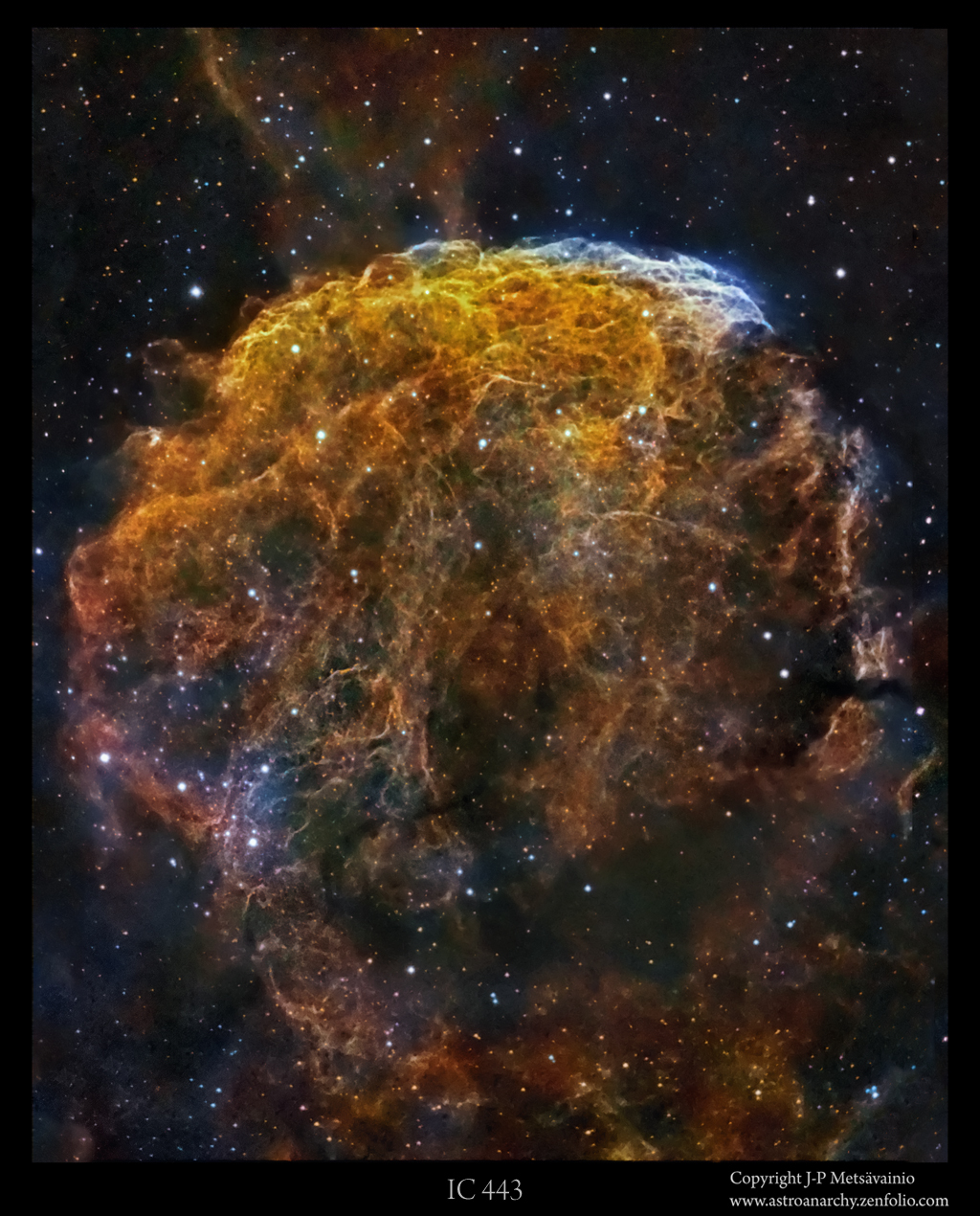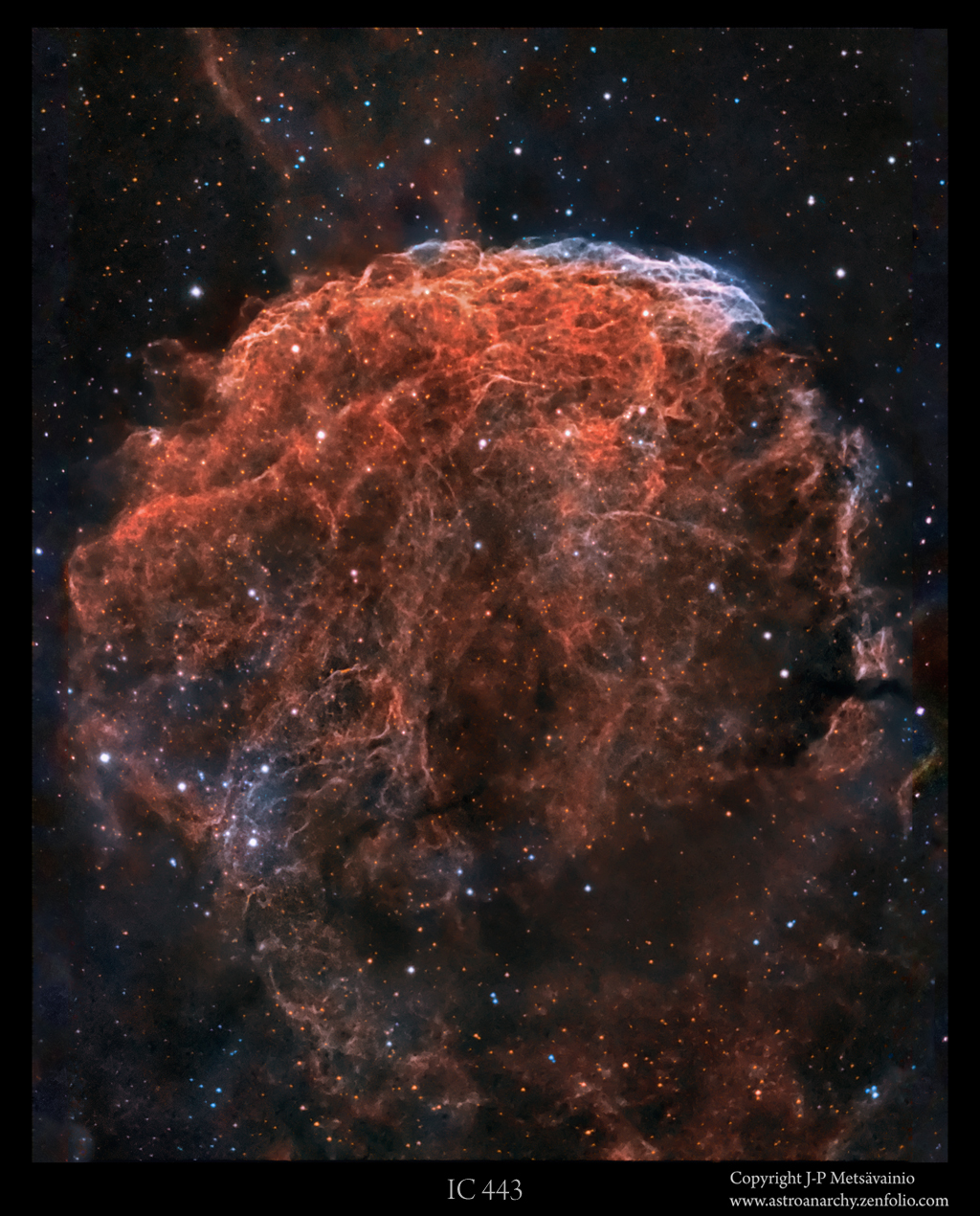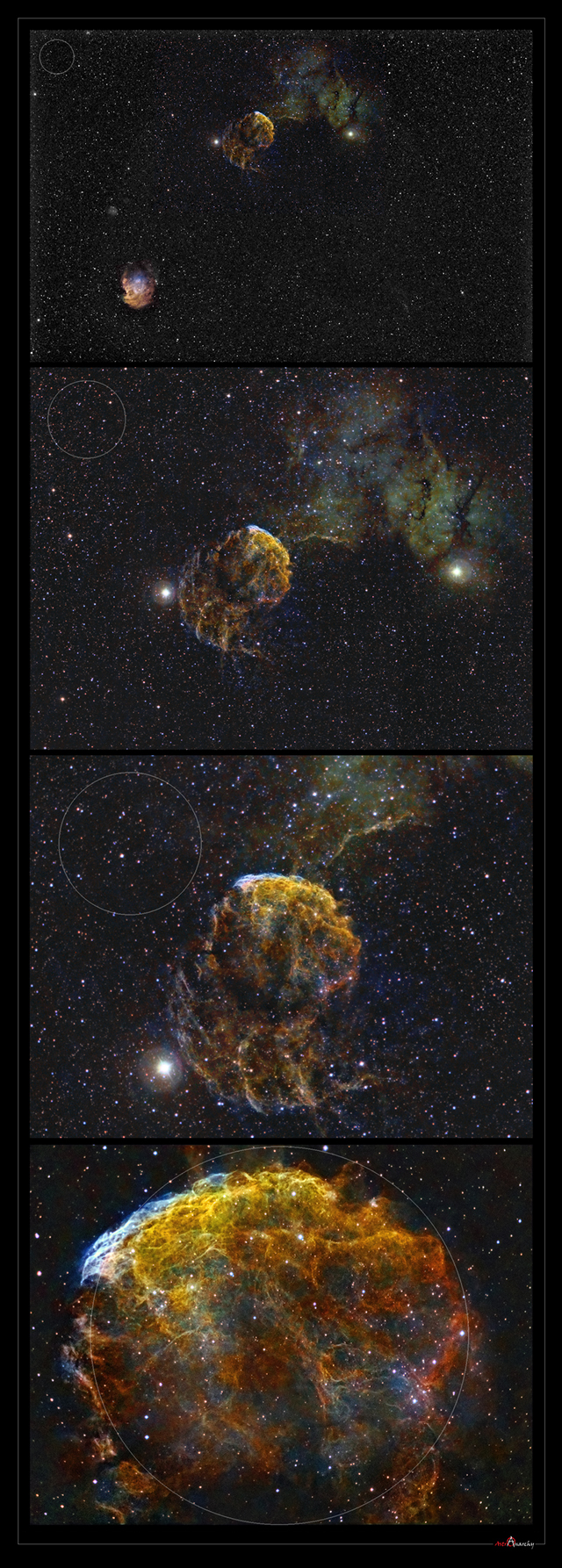I have shot several times this supernova remnant in Gemini. In this image, there are three different exposure sets combined, first from the year 2010 and two others from this season. Total exposure time is now around 20h. Latest images for this target are shot at 11.02 this week, 3h of H-alpha emission.
A Gemini SNR, IC 443, the "Jellyfish Nebula"
Ra 06h 17m 13s Dec +22° 31′ 05′′
Image is in HST-palette, from the emission of ionized elements, R=Sulfur, G=Hydrogen and B=Oxygen.
INFO
IC 443 (also known as the Jellyfish Nebula and Sharpless 248 (Sh2-248)) is a Galactic supernova remnant (SNR) in the constellation Gemini. It locates visually near the star Eta Geminorum at distance of about 5000 light years.
IC 443 may be the remains of a supernova that occurred 3,000 - 30,000 years ago. The same supernova event likely created the neutron star CXOU J061705.3+222127, the collapsed remnant of the stellar core. IC 443 is one of the best-studied cases of supernova remnants interacting with surrounding molecular clouds
Source Wikipedia, http://en.wikipedia.org/wiki/IC_443
IC 443 in visual colors
A natural color composition from the emission of ionized elements.
R=80%Hydrogen+20%Sulfur, G=100%Oxygen and B=85%Oxygen+15% Hydrogen to compensate otherwise missing H-beta emission. This composition is very close to a visual spectrum.
Older wide field images of the same target
Click for large images
A wide field image from Spring season 2012, Image info in the blog post here:
Two panel mosaic
A two panel mosaic, info in the original blogpost here:
A study about the apparent scale in the sky
Click for a large image
Note. A Moon size circle as a scale.
Technical details
Processing work flow:
Image acquisition, MaxiDL v5.07.
Stacked and calibrated in CCDStack2.
Levels, curves and color combine in PS CS3.
Optics, Meade LX200 GPS 12" @ f5
Camera, QHY9
Guiding, SXV-AO, an active optics unit, and Lodestar guide camera 8Hz
Image Scale, ~0,8 arc-seconds/pixel
Exposures for the H-alpha, emission of ionized Hydrogen = 20h
A single unprocessed 1200 second frame of H-a emission
A single 20 min. frame, just calibrated and stretched. Imaged with the QHY9 camera, Baader 7nm H-alpha filter and Meade LX200 12" telescope.







0 comments:
Post a Comment